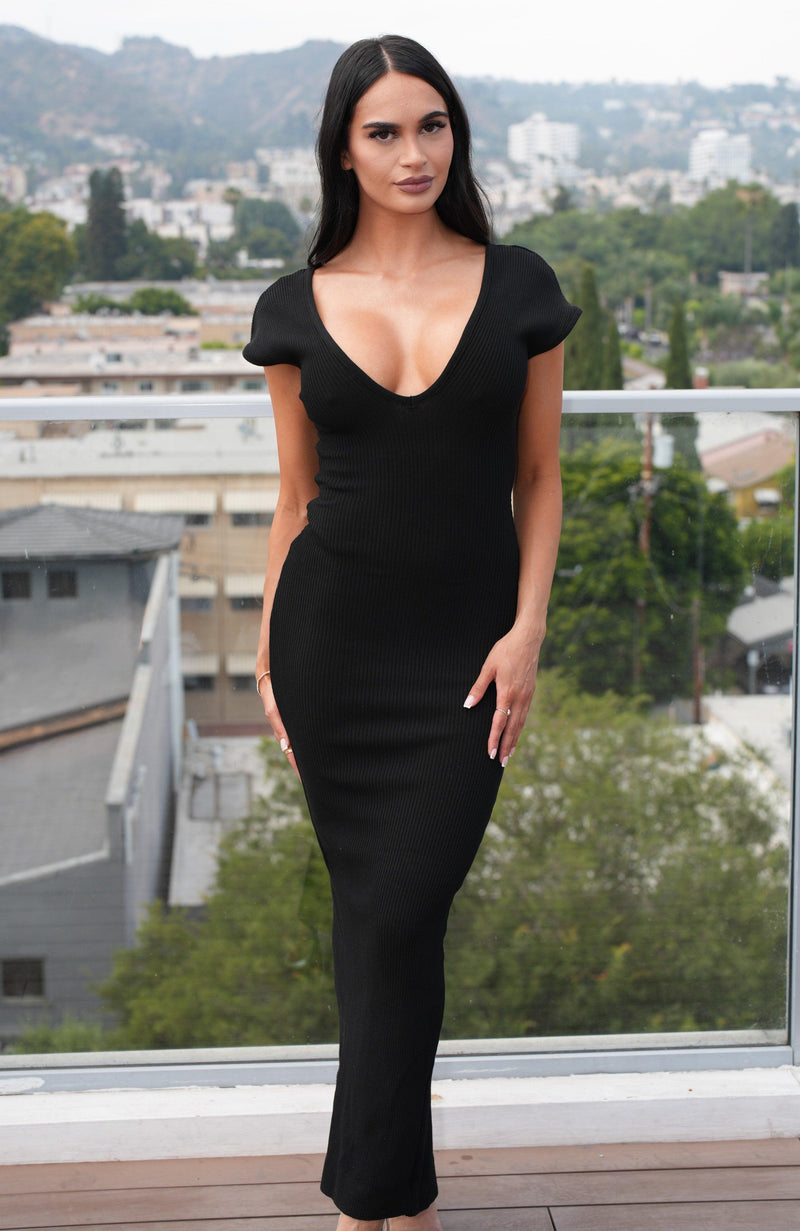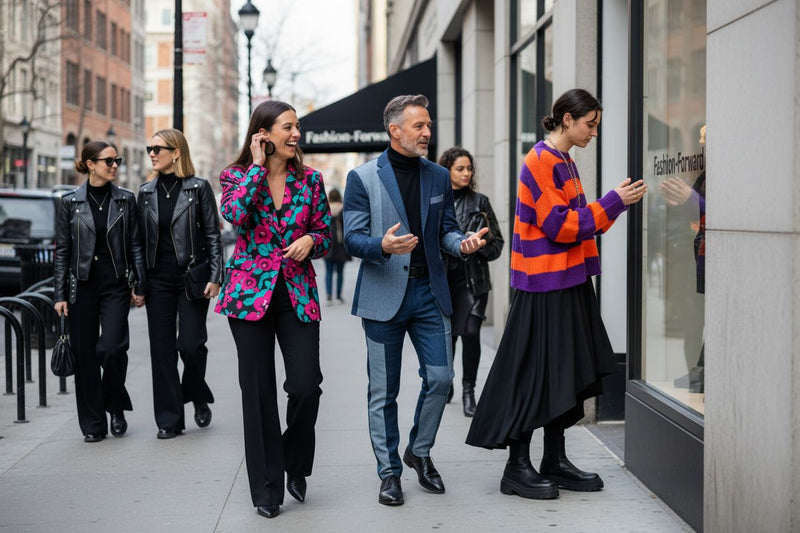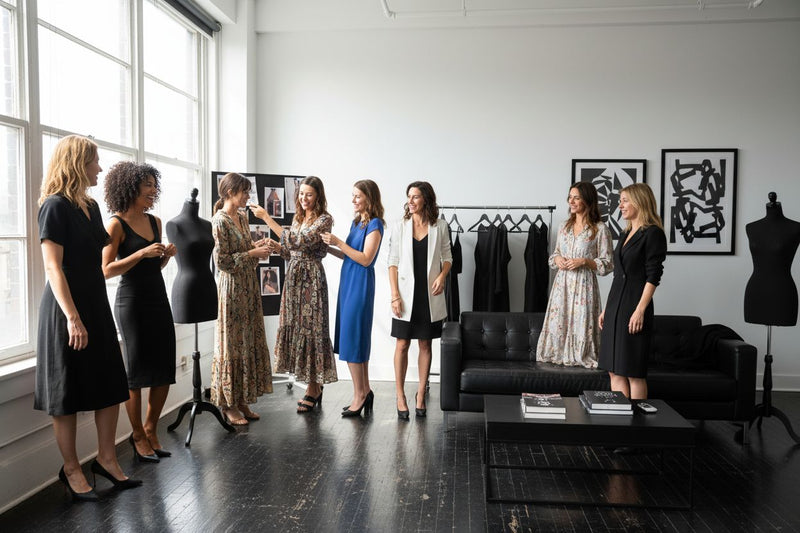
Fast fashion pumps out billions of garments every year, flooding stores with new styles at record speed. Yet, the fashion industry is responsible for around 10 percent of global carbon emissions and is the second-largest consumer of water worldwide. That would make you think style is all about speed and quantity. The truth flips the script. More people are discovering that investing in fewer, high-quality clothing pieces is not just smarter for your wallet, it is one of the most powerful ways to support both the planet and the people who make your clothes.
Table of Contents
- Defining Slow Fashion: A New Approach To Style
- The Importance Of Slow Fashion In Today’s World
- How Slow Fashion Works: Principles And Practices
- Key Concepts Of Slow Fashion: Sustainability And Ethics
Quick Summary
| Takeaway | Explanation |
|---|---|
| Invest in quality over quantity | Choose fewer, high-quality garments designed to last rather than cheap, trendy pieces that quickly get discarded. |
| Support ethical brands | Prioritize brands that emphasize fair labor practices and transparency in their supply chains to create a humane fashion industry. |
| Embrace sustainability | Select materials that are organic, recycled, and have a lower environmental impact to reduce your overall carbon footprint and ecological damage. |
| Practice mindful consumption | Be intentional about your purchases, focusing on timeless pieces that align with your personal values and contribute to a sustainable future. |
| Extend garment lifespan | Engage in proper care, repair, and upcycling of clothing to minimize waste and promote longer lifecycles for your garments. |
Defining Slow Fashion: A New Approach to Style
Slow fashion represents a transformative philosophy that challenges the rapid, disposable nature of contemporary clothing production. Unlike traditional fast fashion models that prioritize quick turnover and low costs, slow fashion emerges as a conscious, sustainable alternative focused on quality, ethical production, and mindful consumption.
The Core Philosophy of Slow Fashion
At its heart, slow fashion is about reimagining clothing as more than just temporary trends. This approach views fashion as a holistic system that considers environmental impact, worker conditions, material sourcing, and long-term wearability. The fundamental principle is simple yet profound: invest in fewer, higher-quality pieces that are designed to last, rather than constantly purchasing cheap, quickly discarded garments.
According to McKinsey & Company’s Sustainability Report, the fashion industry contributes approximately 4% of global greenhouse gas emissions. Slow fashion directly confronts this environmental challenge by promoting:
- Sustainable Material Selection: Prioritizing organic, recycled, and low-impact textiles
- Ethical Manufacturing: Supporting fair labor practices and transparent supply chains
- Timeless Design: Creating clothing that transcends seasonal trends
Principles of Conscious Consumer Choice
Slow fashion empowers consumers to become active participants in a more responsible fashion ecosystem. By making intentional purchasing decisions, individuals can reduce waste, support ethical brands, and challenge the existing mass-production model.
This approach doesn’t just mean buying less—it means buying better. Consumers are encouraged to read more about fashion style choices that align with personal values, prioritizing craftsmanship, durability, and meaningful production processes over fleeting trends.
Ultimately, slow fashion is more than a trend—it’s a comprehensive reimagining of our relationship with clothing, positioning style as a reflection of personal values and global consciousness.
To clarify the differences between fast fashion and slow fashion, the following table compares their core characteristics across critical areas mentioned in the article.
| Aspect | Fast Fashion | Slow Fashion |
|---|---|---|
| Speed & Quantity | Rapid production of large volumes and frequent new styles | Emphasizes fewer, high-quality pieces designed for longevity |
| Environmental Impact | High carbon emissions, significant water usage, and waste | Prioritizes sustainability, low-impact materials, and waste reduction |
| Labor Practices | Often relies on low-wage, sometimes exploitative labor | Supports fair wages, safe working conditions, and worker rights |
| Design Approach | Trend-driven, designed for short-term use | Timeless, versatile, and durable designs |
| Consumer Engagement | Disposable mindset, frequent buying and discarding | Encourages mindful purchasing and garment care |
The Importance of Slow Fashion in Today’s World
The global fashion landscape is undergoing a profound transformation, with slow fashion emerging as a critical response to the environmental and social challenges created by traditional clothing production. In an era of increasing climate awareness and social responsibility, slow fashion represents far more than a trend—it is a necessary paradigm shift in how we approach consumption and personal style.
Environmental Impact and Sustainability
The fashion industry is a significant contributor to global environmental challenges. The United Nations Environment Programme reports that the textile industry produces 10% of global carbon emissions and is the second-largest consumer of water worldwide. Slow fashion directly confronts these alarming statistics by promoting practices that dramatically reduce environmental harm:
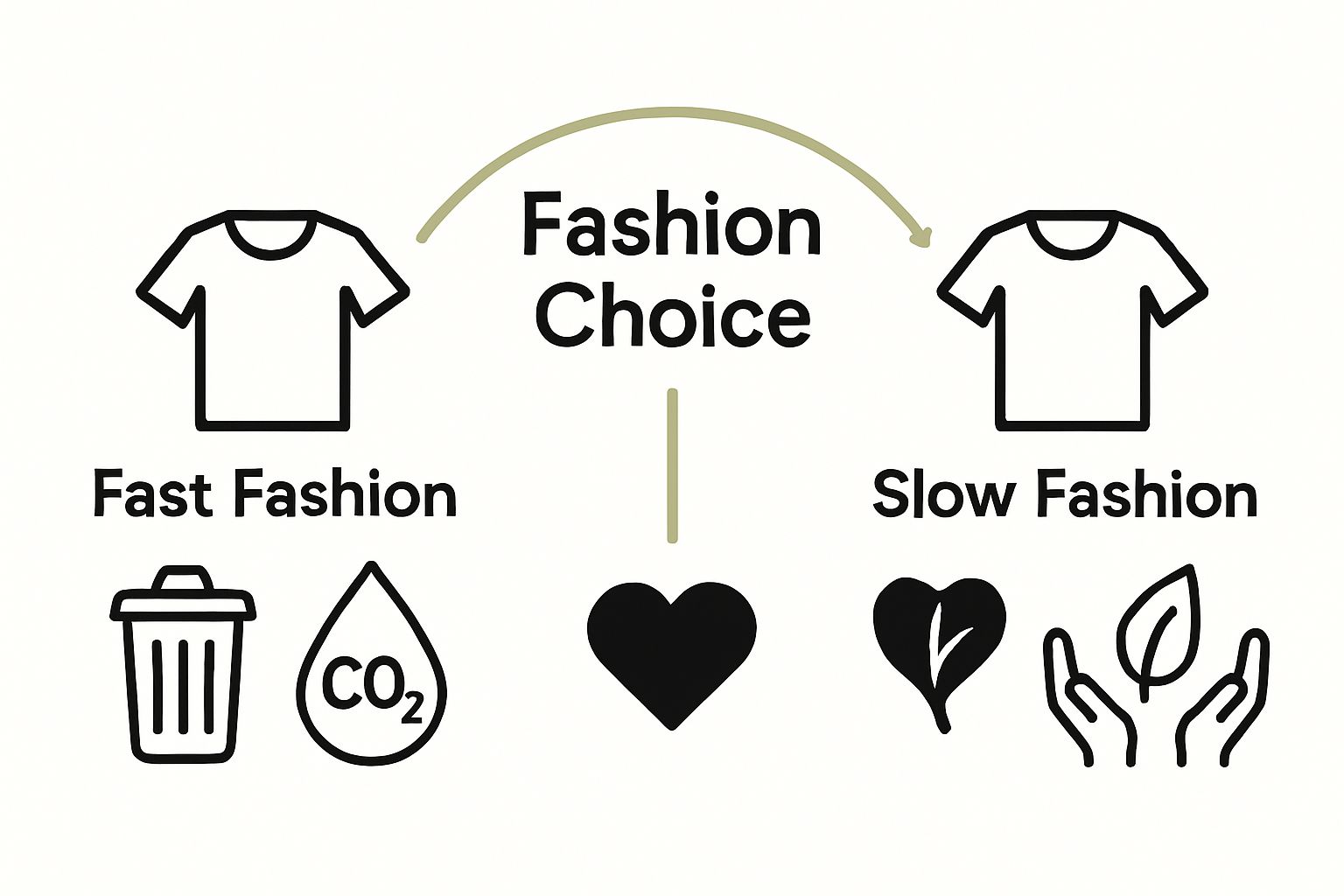
- Reduced Waste: Minimizing clothing production and encouraging longer garment lifecycles
- Lower Carbon Footprint: Selecting materials and production methods with minimal environmental impact
- Water Conservation: Prioritizing production techniques that significantly reduce water consumption
Economic and Social Empowerment
Beyond environmental concerns, slow fashion represents a powerful economic and social movement. By understanding the role of fashion trends, consumers can make more intentional choices that support fair labor practices and local artisan communities. This approach challenges the exploitative practices of fast fashion, which often rely on low-wage workers in developing countries.
Personal and Global Transformation
Slow fashion invites individuals to reconsider their relationship with clothing. It encourages a shift from quantity to quality, from disposable to durable. By investing in well-crafted, timeless pieces, consumers not only reduce their environmental impact but also cultivate a more mindful and intentional approach to personal style.
Ultimately, embracing slow fashion is an act of personal and collective responsibility. It represents a commitment to creating a more sustainable, equitable, and conscious fashion ecosystem that respects both people and the planet.
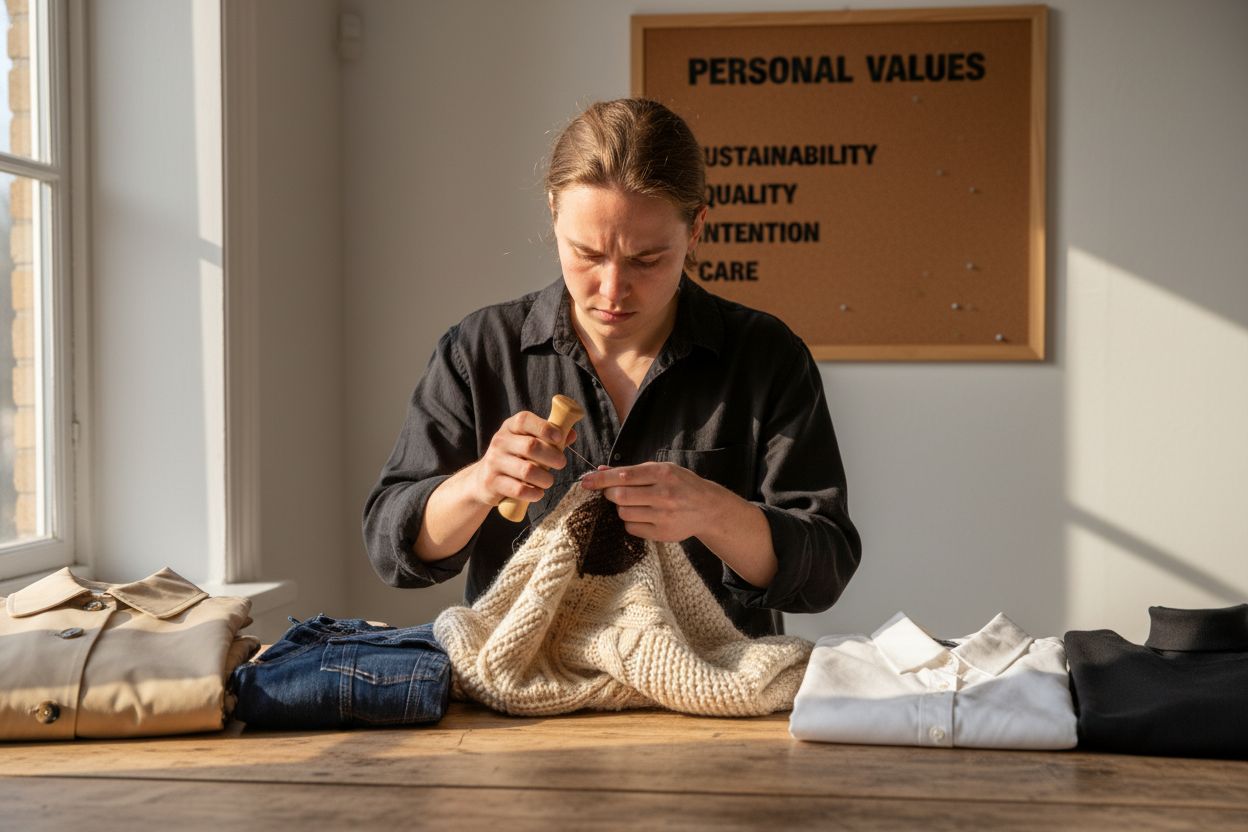
How Slow Fashion Works: Principles and Practices
Slow fashion operates through a comprehensive approach that reimagines every stage of clothing production and consumption. Unlike traditional fashion models, this methodology prioritizes transparency, sustainability, and ethical considerations throughout the entire lifecycle of a garment.
Design and Material Selection
The foundation of slow fashion begins with intentional design and material selection. Designers committed to this philosophy focus on creating timeless, versatile pieces that transcend seasonal trends. Research from the Sustainable Apparel Coalition highlights that material selection is crucial, with designers prioritizing:
- Sustainable Textiles: Organic cotton, recycled fabrics, and low-impact materials
- Durability: Selecting high-quality fabrics that withstand multiple wears
- Minimal Waste: Designing patterns that reduce fabric waste during production
Production and Manufacturing Practices
Slow fashion radically transforms traditional manufacturing processes. By understanding key terms for women’s fashion, consumers can appreciate the intricate practices that set ethical production apart. This approach emphasizes:
- Fair Labor Conditions: Ensuring living wages and safe working environments
- Local Production: Minimizing transportation emissions by supporting local manufacturers
- Transparent Supply Chains: Providing complete visibility into production processes
Consumer Engagement and Lifecycle Management
Consumers play a critical role in the slow fashion ecosystem. This approach encourages a fundamental shift from disposable to purposeful consumption. Practical strategies include:
- Thoughtful Purchasing: Investing in fewer, higher-quality pieces
- Garment Care: Extending clothing lifespan through proper maintenance
- Repair and Upcycling: Embracing methods that give clothing extended life
Ultimately, slow fashion is not just about clothing—it’s a holistic approach to consumption that challenges individuals to be more intentional, responsible, and conscious about their fashion choices.
The main principles and practices of slow fashion can be organized in the table below to provide a clear overview of each stage’s core focus.
| Stage | Key Focus Areas |
|---|---|
| Design & Material Selection | Timeless style, sustainable textiles, durability, waste reduction |
| Production & Manufacturing | Fair labor, local production, transparent supply chains |
| Consumer Engagement | Thoughtful purchasing, garment care, repair, and upcycling |
Key Concepts of Slow Fashion: Sustainability and Ethics
Slow fashion transcends mere clothing production—it represents a profound philosophical and practical approach to addressing the complex environmental and social challenges inherent in traditional fashion systems. By interweaving sustainability and ethical principles, this movement seeks to transform how we conceptualize, produce, consume, and dispose of clothing.
Environmental Sustainability Foundations
At the core of slow fashion lies a commitment to minimizing environmental degradation. The Smithsonian Magazine highlights the critical importance of creating closed-loop systems where garments are designed with their entire lifecycle in mind. This approach focuses on:
- Circular Design: Creating clothing that can be fully recycled or biodegraded
- Resource Conservation: Minimizing water, energy, and raw material consumption
- Carbon Footprint Reduction: Selecting production methods with lowest possible environmental impact
Ethical Labor and Social Responsibility
Beyond environmental considerations, slow fashion places immense emphasis on human rights and worker dignity. By understanding key terms for women’s fashion, consumers can recognize the profound social implications of their clothing choices. Ethical practices include:
- Fair Compensation: Ensuring living wages for all workers in the production chain
- Safe Working Conditions: Eliminating exploitative labor practices
- Community Empowerment: Supporting local artisan communities and traditional craftsmanship
Holistic Consumer Engagement
Slow fashion transforms consumers from passive buyers to active participants in a more just and sustainable fashion ecosystem. This approach demands a fundamental reimagining of personal consumption, encouraging individuals to view clothing as a meaningful investment rather than a disposable commodity.
By embracing these interconnected principles of sustainability and ethics, slow fashion offers a comprehensive alternative to the destructive practices of traditional fast fashion—presenting a vision of style that respects both planetary boundaries and human dignity.
Embrace Ethical Style with Slow Fashion: Discover What Makes Every Choice Matter
You have learned how slow fashion is a powerful response to the challenges of fast fashion, such as waste, environmental harm, and disposable trends. You want pieces that are long-lasting, responsibly made, and reflective of your values—but finding clothing that truly fits the principles of mindful consumption and empowerment is not always easy.
Looking for bold, contemporary pieces that mirror your values? Our Dresses Collection offers timeless designs created for women who want style and substance.
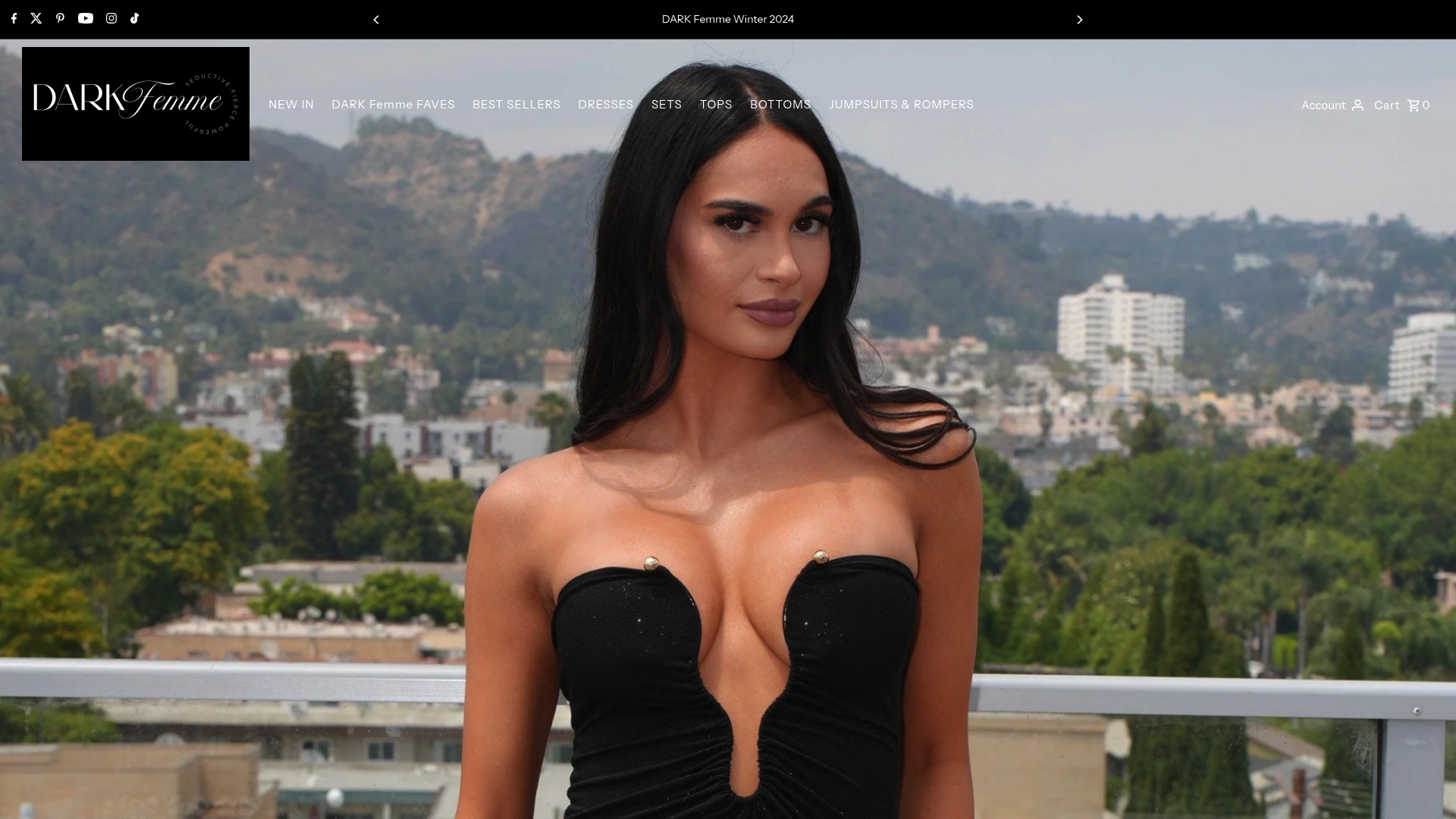
Step up and choose outfits that make you feel confident inside and out. Visit Dark Femme’s main site and browse our Shop All Collection for new arrivals and exclusive styles. Your wardrobe can make a statement for both the planet and your personality. Join the movement and shop now while supplies last.
Frequently Asked Questions
What is slow fashion?
Slow fashion is a sustainable approach to clothing production and consumption that emphasizes quality, ethical manufacturing, and environmental responsibility, contrasting with fast fashion’s focus on quick turnover and low costs.
Why is slow fashion important for the environment?
Slow fashion addresses significant environmental issues caused by the fashion industry, such as high carbon emissions and water consumption. It promotes sustainable practices like reduced waste, lower carbon footprints, and efficient resource use.
How can consumers adopt slow fashion principles?
Consumers can embrace slow fashion by making thoughtful purchasing decisions, investing in high-quality garments, caring for their clothing to extend its lifespan, and considering repair and upcycling options instead of discarding items.
What are some key ethical considerations in slow fashion?
Key ethical considerations in slow fashion include fair labor practices, safe working conditions, and supporting local artisans and communities. This approach aims to ensure that workers are compensated fairly and that traditional craftsmanship is preserved.
Recommended
- Understanding Key Terms for Women’s Fashion Explained – DARK Femme
- 6 Types of Women’s Fashion Styles to Explore Today – DARK Femme
- Understanding the Role of Trends in Bold Fashion – DARK Femme
- What is a Fashion Set? Understanding Style Cohesion – DARK Femme
- What is Slow Fashion? Understanding Its Meaning and Impact - DressMeUpNY
- What is Slow Fashion? Understanding its Meaning and Impact – San Rocco Italia


